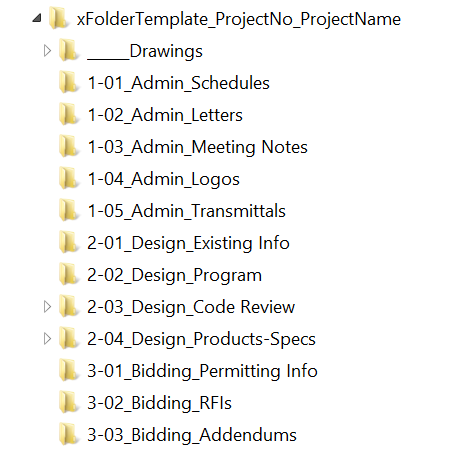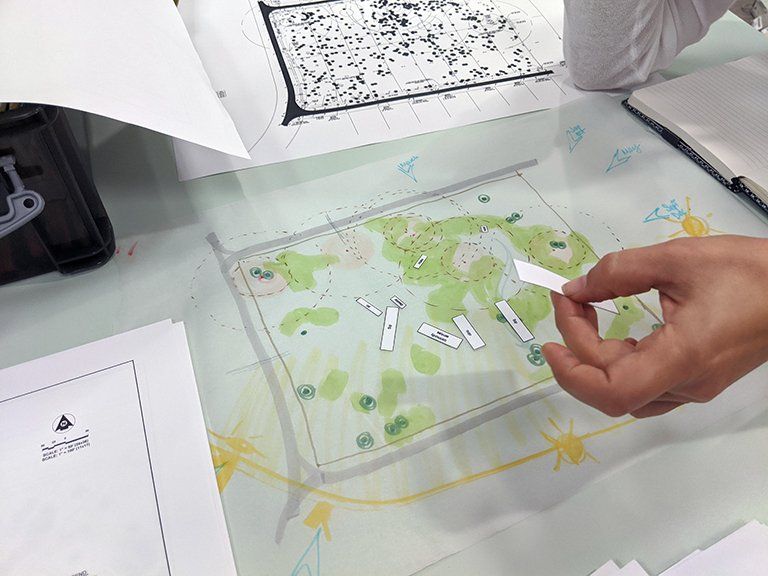Schimberg Group
Architecture & Interior Design
1421 5th Street, Unit D
Sarasota, FL 34236
Good Management Practices
What Gets Managed, Gets Done - Best Practices for Managing Your Daily Work
I often find myself saying to clients, “Anyone can design a building, but not everyone can manage it well.”
My firm began as a construction management company, so I understand that the connection between design and management is critical to the success of any project.

Forming good habits
I’ve come to realize that my approach to management and the best practices that have worked well for me were rooted in skills I started to develop at an early age.
Thinking back, I can remember, even as a 10-year-old, being encouraged to be as well rounded as possible.
Growing up, I played sports competitively in baseball and yes, even duckpin bowling. I painted, sketched and sculpted, developing skills that would later serve me well in the design profession. I was a first chair, All-County flutist and I played the piano. Along with secular school, Hebrew school, my youth group (where I held numerous committee and political positions), and as a working teenager, I always had a lot to manage.
Being involved in all these different activities taught me valuable lessons that help me in my business to this day.
That’s not to say that you can’t form good habits later in life. All you need is an open mind and a commitment to learning and mastering new skills.
Keeping it simple and staying the course
In 2004, I started my own construction management company providing owner representation and construction management for projects ranging from large grocery stores for Whole Foods Market, to multi-family town homes and multi-use 10-story buildings.
Eventually, that company evolved into Schimberg Group, my architecture and interior design firm, where I incorporate and utilize those skills I developed as a teenager in my daily business acumen in order to keep things moving along smoothly, efficiently and in a timely fashion.
What I have learned, as I continue to hone my craft, is that the majority of the skills and techniques required to manage any level of project, or even our day-to-day lives, are inherently simple by nature.
They do not necessarily require deep or intense thought, but more, a commitment to completion without hesitation and without procrastination. Some are simple to do and some take conditioning over time. However, all of them give a person the ability to consistently get more things done and manage multiple projects, while not being overwhelmed, allowing you to focus and complete tasks efficiently and effectively.
Below are some key insights, based on my 16 years of experience as a firm owner. If you are an architect, designer or anyone that needs better management skills, I hope you use these recommendations to keep your projects and your firm on the right track.
Organization
Organization is a critical component of effective management.
On a daily basis, I have a regular routine that helps me keep the essential elements of my business organized and managed:
- Making and managing task lists
- Keeping emails and project folders organized
- Managing email responses and maintaining open communication
Below are examples and explanations of how each component can be utilized as a management tool to help create a better business and more successful project.
Making and managing task lists
A typical day for me includes completing a number of different tasks.
I like to approach tasks in a linear fashion, one after the other. I create my task lists with this approach in mind. As I complete each task, I move onto the next one. I try not to go backwards or skip ahead. I keep my goals, thoughts and tasks in front of me and take them one step at a time.
There are always multiple things that need to be completed for any one project. Often, once complete, the next item is critical to the completion of the previous task. Don’t let too many items overwhelm you. If you pursue each task linearly, they get done quicker and more efficiently.
This approach requires a specific mindset and by doing so, it eases the pressure created by an overwhelming list and, instead, allows you to focus on each item singularly. Once complete, you can press the “that was easy” button and move on to the next task at hand.
I could not survive without my task lists. But I have some basic rules when it comes to creating lists and keeping tasks on track.
- Create your lists using one pad of paper.
- IMPORTANT: Keep all of your lists in one place. Do not use multiple pads of paper or different notebooks. Having different pads of paper with only the front page written on is not organization, that’s a collection. Eventually, those pads get misplaced.
- As you complete your tasks, cross the items out.
- Science shows crossing tasks off of lists equates to an endorphin rush.
- When all the tasks on that page are completed, rip that out and go to the next.
- Don’t languish on the past. Those tasks are done and ripping that page out signifies that you can now forget about them and move on.
PRO TIP: GO DIGITAL WITH LIST MANAGEMENT
An even better and more environmentally friendly approach is to use a tool like One Note from Microsoft. I use One Note to manage my lists on my computer, phone and/or tablet.
I’ve been doing this for 16 years and the number of trees I’ve saved and trash I’ve prevented is extraordinary.
The satisfaction of erasing a task from existence and rewriting a new task in its place is exhilarating. There are other programs out there that provide similar tools, so find one that’s compatible to your technology and get it.
The important takeaway is to start making lists.
Keeping Email and Project Folders Organized
The beauty of Outlook is that it allows a great degree of organization. I use Outlook folders as an organization tool to keep my projects well managed and in a clear, concise format.
For my business, along with many other different folders, I keep three main folders:
- Current Projects
- Potential Projects
- Old Projects
In each of those folders are project names.
In each of those named folders are associated topics and subjects.
As I add new topics, I create new folders.
Folders are further organized into sub folders.
Under a folder named 'Contracts', each consultant gets a folder.
Under a folder named 'Submittals' is every different type of submittal.
Under the 'Construction' folder is a folder for every facet of the construction phase.
As you can imagine, this approach is applicable to any business and any type of project.
Immediately upon receipt of an email, it goes into a folder. It doesn’t stay in the Inbox. We want to avoid seeing the number 1,234 in parentheses.
Email Etiquette: the fine art of managing email responses and maintaining open communication
Proper email etiquette helps to keep you organized. What do I mean by email etiquette? When someone emails you and leaves it open for a response, respond. Don’t get to it later. This keeps your mind from having to think about it or worry about whether or not you responded. It becomes one less thing that requires organization, which means it is one more thing that you have managed.
Final Thoughts
If I can leave you with one golden nugget of insight, it’s this: Be like Nike, Just Do It.
By constantly approaching projects in a manner that keeps your files organized and provides you with a clear, visual list of what to do next, it gives you the ability to systematically check things off of your list and put them out of your mind.
This provides two important benefits:
- It reduces the pressure and stress of worrying about whether you did something or need to do it or worse, forgot to do it.
- Seeing those tasks get completed not only provides a visual queue and sense of accomplishment, it builds your confidence for moving onto the next step, next goal or next task.
The end result is that you get closer to reaching your goals and even better, a continued progression of success.
I’d love to hear from readers who have other organizational tips for good management practices and what types of success you have had whether in the architectural world or other business environments. To share your comments, email barron@theschim.com. Also, don’t forget to subscribe to our newsletter,
Methods and Madness, for more insight, information, and visual stimulation for all things architecture and interior design related.
Recent Blog Posts
Website design by Archmark




